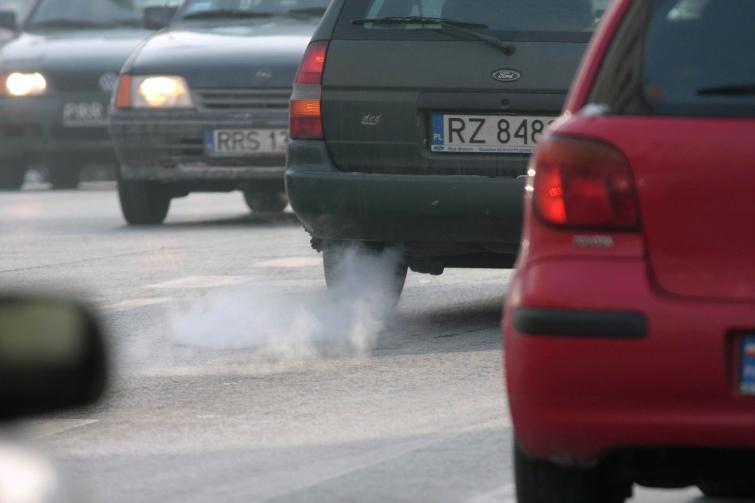
Catalog fuel consumption and reality - where do these differences come from?
 The fuel consumption declared by the manufacturers is lower than the real one even by a third. No wonder - they are measured in conditions that have little to do with traffic.
The fuel consumption declared by the manufacturers is lower than the real one even by a third. No wonder - they are measured in conditions that have little to do with traffic.
The principles for measuring fuel consumption are strictly defined by EU regulations. According to the guidelines, car manufacturers take measurements not in real driving conditions, but in laboratory conditions.
Heat and indoors
The vehicle is subjected to a dyno test. Before starting the measurement, the room warms up to a temperature of 20-30 degrees. The directive specifies the required air humidity and pressure. The tank of the test vehicle shall be filled with fuel to the level of 90 percent.
Only after these conditions are met, you can proceed to the test. On the dyno, the car "passes" 11 kilometers. In fact, only its wheels rotate, and the body does not move. The first stage is to accelerate the car to a maximum speed of 50 km / h. A car travels a distance of 4 kilometers at an average speed of approximately 19 km/h. Having overcome this distance, the driver accelerates to 120 km / h and the next 7 kilometers he must reach an average speed of 33,6 km. Under laboratory conditions, the car accelerates and brakes very gently, the driver avoids sharp pedaling to the bottom. The result of fuel consumption is not calculated based on the readings of the computer or after refueling the vehicle. It is set at the level of the collected exhaust gas analysis.
big differences
The effect? Manufacturers have provided sensational fuel consumption results in catalogs informing about the technical data of the car. Unfortunately, as practice shows, in most cases, in normal traffic conditions, with everyday use of the car, the data is practically unattainable. As shown by tests conducted by regiomoto journalists, the actual fuel consumption is on average 20-30 percent higher than declared by the manufacturers. Why? According to experts, the difference is due to several reasons.
- Firstly, these are completely different driving conditions. The dynamometer test is high air temperature, so the engine warms up faster. This means that the automatic choke is switched off earlier and the fuel consumption is automatically reduced, says Roman Baran, rally driver, Polish mountain racing champion.
No traffic jams or speed drops
Another remark concerns the method of measurement. In the manufacturer's test, the car drives all the time. In street conditions, stops more often. And it is during acceleration and standing in a traffic jam that the engine consumes additional fuel.
“So it's hard to say that driving 11 kilometers on a dynamometer is equivalent to driving 11 kilometers through a densely populated city and a section of a busy national road through undeveloped terrain,” says Baran.
Those who drive 10-15 km in the urban cycle will find that the operating conditions of the car have a huge impact on fuel consumption. Under such conditions, the readings of the on-board computer reach 10-15 liters per hundred, while the consumption declared by the manufacturer in the city is usually 6-9 l / 100km. Over a longer distance, a car with a warm engine is usually within the manufacturer's declared values. Few people drive 50 km around the city at a time.
A lot depends on the engine.
However, according to Roman Baran, this is not surprising. Achieving results similar to manufacturers' measurements is possible, and much depends on the type of engine. “Let me give you an example. Driving an Alfa Romeo 156 with a 140 hp 1.9 JTD diesel engine. I have noticed that driving style only slightly affects fuel consumption. A gentle ride through the city ended with a result of 7 liters, the hardest one liter more. For comparison, a gasoline Passat 2.0 FSI can burn 11 liters in the city, but by pressing the gas pedal to the very bottom it is easy to raise the computer readings by 3-4 liters. In a word, the car must be felt, says Baran.
Change your habits
To get closer to the results declared by the manufacturers, it is also worth remembering to reduce the weight of the car. Extra pounds in the form of a toolbox, car cosmetics and a spare can of fuel are best left in the garage. With today's gas stations and workshops, most of them will not be needed. Use a box or roof rack only when you need it. - Boxing increases air resistance. Therefore, you should not be surprised when a diesel engine equipped with it will burn 7 liters instead of 10 on the highway, Baran adds.
In the city, engine braking is the basis for reducing fuel consumption. We must remember this especially when reaching the crossroads. Instead of throwing in "neutral", it's better to get to the signal in gear. This is the basis of eco-driving! Finally, one more piece of advice. When buying a car, you should first ride it. Almost every dealer today has a large fleet of test vehicles. Before choosing an engine, it would be a good idea to reset the on-board computer and test the car on crowded streets. While computer readings are not XNUMX% fuel consumption, they will certainly give the driver a more accurate representation of reality than catalog data.